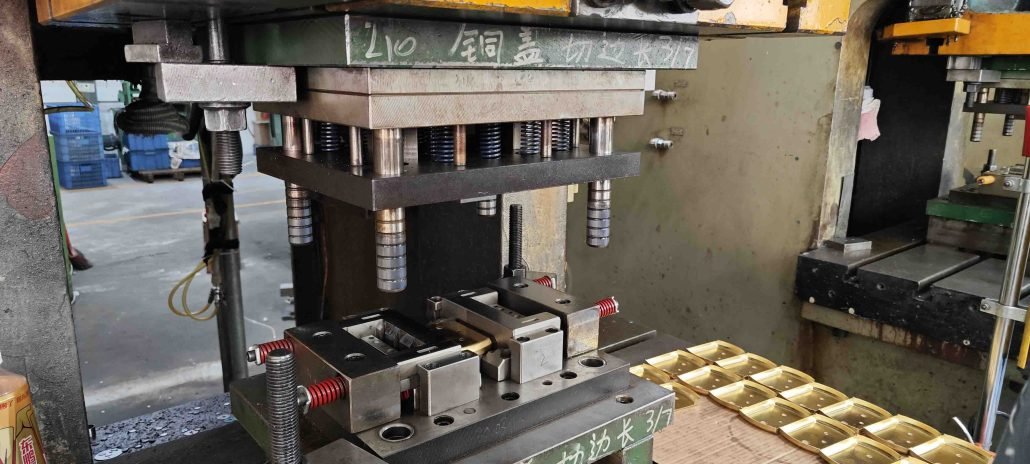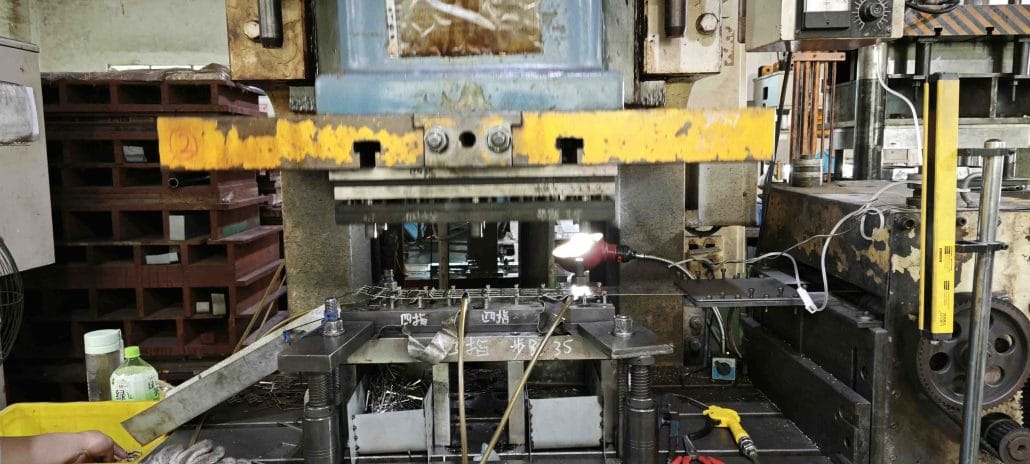Metal stamping is a widely used manufacturing process that involves cutting, bending, and shaping metal sheets to create a specific shape or design. This guide outlines the critical design considerations that must be taken into account when designing metal components, including material selection, design for manufacturability, tolerances, and tooling design. By considering these factors, the design engineer can create metal components that meet the required specifications, are cost-effective, and can be produced efficiently.
Metal Stamping Design Guide
Metal stamping is a widely used manufacturing process that involves cutting, bending, and shaping metal sheets to create a specific shape or design. The process is used to create various metal components used in different industries, such as automotive, aerospace, electronics, and construction.
For a successful metal stamping project, it is crucial to follow specific design guidelines. This guide outlines the critical design considerations that must be taken into account when designing metal components.

Material Selection
The choice of metal material affects the success of a metal stamping project. The design engineer should consider various factors when selecting a material, such as the intended purpose of the component, the required physical, chemical, and mechanical properties, and the availability, cost, and workability of the material.
The most commonly used metals for metal stamping include steel, aluminum, copper, brass, and nickel alloys. Each metal has its unique characteristics and properties that make them suitable for specific applications. For instance, steel is durable and has high strength, making it ideal for automotive and construction applications. Aluminum is lightweight and has excellent corrosion resistance, making it suitable for aerospace and electronic applications.
Design for Manufacturability
Design for manufacturability is a critical consideration when designing metal components. The design should be simple and easy to manufacture, minimizing the number of manufacturing steps required. The component should be designed to minimize the amount of material waste generated during the manufacturing process.
The design engineer should consider the following factors when designing for manufacturability:
- Symmetry and uniformity: The component should be symmetrical and have uniform thickness to ensure consistent stamping.
- Features and cutouts: The design should minimize the number of features and cutouts to reduce the number of manufacturing steps.
- Bend radius: The bend radius should be consistent to avoid deformation during stamping.
- Tolerance stack-up: The design should consider the tolerance stack-up to ensure proper fit and assembly.

Tolerances
Tolerances are critical to ensure the functionality and performance of metal components. The design engineer should specify the tolerances required for the component, considering the intended purpose of the component, the manufacturing process, and the assembly process.
The tolerances should be as tight as possible without affecting the functionality of the component. The tolerances should be specified for all critical dimensions, including the location of holes, slots, and other features. The design engineer should also consider the tolerance stack-up to ensure proper fit and assembly.
Tooling Design
The tooling design is critical to the success of a metal stamping project. The tooling should be designed to produce the component accurately and efficiently, minimizing the number of operations required. The tooling should also be designed to minimize the amount of material waste generated during the manufacturing process.
The design engineer should consider the following factors when designing tooling:
- Die design: The die should be designed to match the component’s shape and size, ensuring accurate stamping.
- Punch design: The punch should be designed to match the die’s shape and size, ensuring accurate stamping.
- Material selection: The die and punch should be made from high-quality material to ensure durability and longevity.
- Maintenance: The tooling should be designed for easy maintenance, ensuring consistent performance and accuracy.
Metal stamping is a crucial manufacturing process used to create various metal components. To ensure the success of a metal stamping project, it is essential to follow specific design guidelines. Material selection, design for manufacturability, tolerances, and tooling design are critical design considerations that must be taken into account when designing metal components. By considering these factors, the design engineer can create metal components that meet the required specifications, are cost-effective, and can be produced efficiently.
Difficulties of Metal Stamping Design
Metal stamping is a commonly used manufacturing process in which a flat sheet of metal is transformed into a desired shape using a stamping press and a tool-and-die set. While metal stamping is an efficient and cost-effective way to produce high-quality metal parts, it also comes with its own set of design challenges. Here are some of the difficulties of metal stamping design:

- Material selection: The choice of metal material can significantly impact the stamping process and the final product. Different metals have different properties, such as strength, ductility, and thickness, which affect how they behave during stamping. Designers need to carefully consider the material selection to ensure that the chosen material is compatible with the stamping process and can meet the desired performance requirements.
- Tool and die design: The design of the tool and die is critical to the success of the stamping process. The tool and die must be designed to match the complexity and accuracy of the part to be produced. This involves considering factors such as the material strength, thickness, and shape, as well as the number of bends and the required tolerances.
- Part geometry: The geometry of the part can also pose challenges during the stamping process. Features such as holes, slots, and bends can cause material distortion, cracking, or tearing. Designers need to ensure that the part geometry is optimized for the stamping process and that the tool and die can accommodate the desired features.
- Surface finish: The surface finish of the final part can impact its appearance, functionality, and durability. Achieving the desired surface finish can be challenging, especially when stamping complex parts with fine details. Designers need to carefully consider the surface finish requirements and work with the stamping company to ensure that the final product meets the desired specifications.
In conclusion, designing for metal stamping requires careful consideration of multiple factors, including material selection, tool and die design, part geometry, and surface finish. By addressing these challenges, designers can ensure that the stamping process produces high-quality parts that meet the desired performance and appearance requirements.
The Four Types of Metal Stamping
Metal stamping is a widely used manufacturing process in various industries such as automotive, aerospace, electronics, and many others. It is a cost-effective and efficient way to manufacture high-quality metal products in large quantities. The process involves converting flat metal sheets into specific shapes through the use of a stamping press.
There are four types of metal stamping processes, which include:

- Blanking: This process involves cutting a flat metal sheet into a specific shape, which is usually the first stage in the manufacturing process. The process of blanking is used to create a flat piece of material that can be further processed into a specific shape.
- Bending: This process involves forming the metal sheet into a specific shape using a bending press. It is commonly used to create curves, angles, and other complex shapes. The process of bending is used to create shapes that cannot be achieved through blanking alone.
- Piercing: This process involves creating holes or cutouts in the metal sheet, which is usually done after the blanking process. The process of piercing is used to create openings in the material for further processing or assembly.
- Coining: This process involves creating raised or recessed designs on the metal sheet, which is usually done after the bending or piercing process. The process of coining is used to create decorative or functional features on the material.
Each of these metal stamping processes requires specialized equipment and techniques to ensure that the final product meets the required specifications. The manufacturing process involves a series of steps that must be carefully planned and executed to ensure that the final product meets the required quality standards.
In conclusion, metal stamping is a versatile manufacturing process that allows for the creation of high-quality metal products in large quantities. Whether you are in the automotive, aerospace, electronics, or any other industry, metal stamping is a cost-effective and efficient way to produce the metal components you need.
FAQ
The most commonly used metals for metal stamping include steel, aluminum, copper, brass, and nickel alloys. Each metal has its unique characteristics and properties that make them suitable for specific applications.
Metal stamping is a manufacturing process that involves cutting, bending, and shaping metal sheets to create specific shapes or designs. The process is used to create various metal components used in different industries, such as automotive, aerospace, electronics, and construction.


